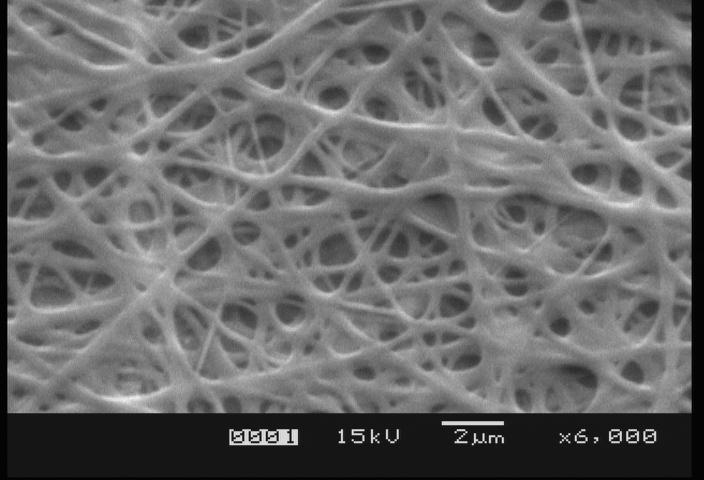▼ Reference
- Chavoshnejad P, Razavi M J. Effect of the Interfiber Bonding on the Mechanical Behavior of Electrospun Fibrous Mats. Scientific Reports 2020; 10: 7709. Open Access
- Commarieu B, Compaoré M, de Boëver R, Imbeault R, Leprince M, Martin B, Perard B, Qiu W, Claverie JP. Ultra-High Tg Thermoset Fibers Obtained by Electrospinning of Functional Polynorbornenes. Nanomaterials. 2022; 12(6):967. Open Access
- Ghelich R, Rad M K, Youzbashi A A. Study on Morphology and Size Distribution of Electrospun NiO-GDC Composite Nanofibers. Journal of Engineered Fibers and Fabrics. 2015; 10: 12. Open Access
- Gopal R, Kaur S, Ma Z, Chan C, Ramakrishna S, Matsuura T. Electrospun nanofibrous filtration membrane. Journal of Membrane Science 2006; 281: 581. Open Access
- Ismail H M, Zamani S, Elrayess M A, Kafienah W, Younes H M. New Three-Dimensional Poly(decanediol-co-tricarballylate) Elastomeric Fibrous Mesh Fabricated by Photoreactive Electrospinning for Cardiac Tissue Engineering Applications. Polymers 2018; 10(4): 455.
- Kaur S. Thin Film Nanofibrous Composite Electrospun Membrane for Separation of Salts. PhD Thesis 2011, National University of Singapore. Open Access
- Kim I, Kim B S, Nam S, Lee H J, Chung H K, Cho S M, Luu T H T, Hyun S, Kang C. Cross-Linked Poly(vinylidene fluoride-co-hexafluoropropene) (PVDF-co-HFP) Gel Polymer Electrolyte for Flexible Li-Ion Battery Integrated with Organic Light Emitting Diode (OLED). Materials 2018; 11(4): 543. Open Access
- Liu Y, Hou C, Jiao T, Song J, Zhang X, Xing R, Zhou J, Zhang L, Peng Q. Self-Assembled AgNP-Containing Nanocomposites Constructed by Electrospinning as Efficient Dye Photocatalyst Materials for Wastewater Treatment. Nanomaterials 2018; 8(1): 35. Open Access
- Na H, Zhao Y, Zhao C, Zhao C, Yuan X. Effect of hot-press on electrospun poly(vinylidene fluoride) membranes. Polymer Engineering and Science 2008; 48: 934.
- Nada A A, Hassabo A G, Mohamed A L, Zaghloul S. Encapsulation of Nicotinamide into Cellulose Based Electrospun Fibers. J App Pharm Sci. 2016; 6: 013. Open Access
- Qin X H, Wang S Y. Electrospun nanofibers from crosslinked poly(vinyl alcohol) and its filtration efficiency. Journal of Applied Polymer Science 2008; 109: 951.
- Zhang W, Guo Z, Liang Q, Lv R, Shen W, Kang F, Weng Y, Huang Z H. Flexible C-Mo2C fiber film with self-fused junctions as a long cyclability anode material for sodium-ion battery. RSC Adv 2018; 8: 16657. Open Access
▼ Credit and Acknowledgement
Author
Wee-Eong TEO View profile
Email: weeeong@yahoo.com
 ElectrospinTech
ElectrospinTech
